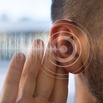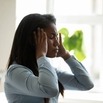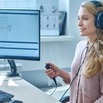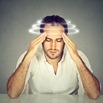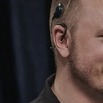WHAT HAPPENS DURING THE TESTING?
- Visual observation of various stationary or moving lights or stripes.
- Placement of the patient in various head and body positions to determine if such maneuvers create dizziness.
- Stimulating the balance system of the inner ears with cool and warm air.
- Slow rotation in a computerized rotational chair. The chair is similar to those used during eye exams, with the addition of a seatbelt and security head strap to keep your torso and head in place.
- Placement of recording electrodes on your neck muscles while presenting a loud sound in your ears.
TESTS PERFORMED
Electrocochleography:
Electrocochleography is a test of the electrical activity generated by the cochlea and eighth nerve. It is most often used to aid in the diagnosis of Ménière disease, but it can also be used for intraoperative monitoring of the cochlear and eighth nerve.
VEMP:
VEMP is a relatively new vestibular function test performed by stimulating one ear with repetitive pulse or click sound stimulation and then measuring surface EMG responses over selected muscles averaging the reaction of the muscle electrical activity associated with each sound click or pulse.
Calorics:
Caloric stimulation is a test that uses differences in temperature to diagnose damage to the acoustic nerve. This is the nerve that is involved in hearing and balance. The test also checks for damage to the brain stem.
Oculomotor: Consists of Saccades, Pendular, & Optikinetic testing. Examples of these tests include Smooth Pursuit, Tracking, Gaze, High Frequency Head Shake, Positionals, Vertebral Artery Screening Test, Dix-Hallpike, etc.
FREQUENTLY ASKED QUESTIONS
- What does this testing evaluate? Balance testing evaluates parts of the body that help maintain balance, including the brain, central nervous system, visual input, and the inner ear balance (vestibular) function.
- Will the test hurt? Will it make me dizzy? Your balance testing will not be painful. Because we are evaluating the balance system, portions of the testing may cause you to experience sensations of movement. Sensations produced during balance testing is usually not severe and does not usually last an extended period of time.
- Will I be able to drive after I am finished with my testing? We strongly recommend having someone come with you to the testing or be able to pick you up after testing is complete. If this is not feasible, please plan extra time after your appointment to recover before getting behind the wheel.
- Why must I stay off certain medications prior to my testing? Certain medications may affect the results of the testing and should therefore be avoided for at least 48 hours prior to your testing. All forms of alcohol should be avoided for the same period of time. Under certain conditions, the doctor may allow certain medicines up to 24 hours prior to testing, but this may compromise the results.
- Why am I having several different tests run on my balance system? Each test performed provides a piece to the puzzle. There are several different portions to the balance system. Some portions test the inner ear/eye reflexes and others test the inner ear/spinal reflexes. Usually, several tests are necessary to correctly diagnose a problem.
- How long will the testing take? The length of your testing will depend on which examination the doctor is requesting that you have performed. Testing will last between 90-120 minutes.
